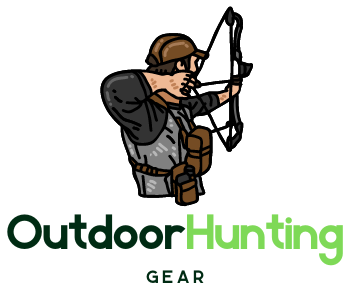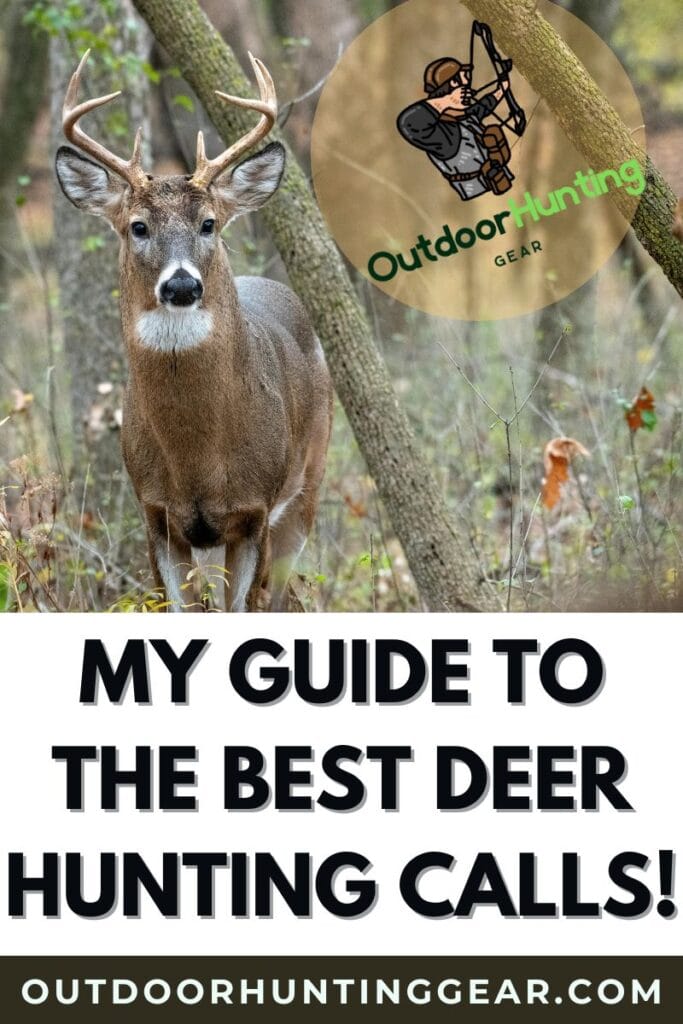Picking the best choke for dove hunting is essential for success. This comprehensive guide will help you understand the different types of chokes and how to select the best one for your needs.
Best Choke for Dove Hunting: Introduction
Doves are fast-flying birds, and they can be difficult to hit, especially if you’re not using the right choke. The right choke can tighten your shot pattern, giving you a better chance of hitting a bird at longer ranges. It can also help you avoid damaging the bird’s meat, which is important if you’re planning to eat it.
There are many different types of chokes available, and it can be confusing to know which one to choose. In this article, we will explain the different types of chokes and how to select the best one for dove hunting. We will also provide some tips on how to use your choke effectively.
Types of Chokes
Chokes are classified by the amount of constriction they have. More constriction means that the shot pattern will be tighter. Less constriction means that the shot pattern will be wider.
The most common types of chokes are:
- Cylinder: This is the most open choke, and it produces the widest shot pattern. It is best for shooting at close range, such as when the birds are flushing from cover.
- Improved Cylinder: This choke is slightly more constricted than the cylinder choke, and it produces a slightly tighter shot pattern. It is a good all-around choke for dove hunting, and it can be used for shooting at both close and medium ranges.
- Modified: This choke is more constricted than the improved cylinder choke, and it produces a denser shot pattern. It is a good choice for shooting at doves at longer ranges.
- Improved Modified: This choke is slightly more constricted than the modified choke, and it produces a very dense shot pattern. It is best for shooting at doves at very long ranges, but it can also be used for shooting at close range if you are using small shot.
- Full: This is the most constricted choke, and it produces the tightest shot pattern. It is best for shooting at doves at very long ranges, but it should not be used at close range, as it can damage the bird’s meat.
Picking the Best Choke for Dove Hunting
The best choke for dove hunting will depend on a number of factors, including the range at which you are shooting, the type of shot you are using, and the conditions in which you are hunting.
If you are hunting in a heavily wooded area, you will want to use a more open choke, such as a cylinder or improved cylinder choke. This will give you a wider shot pattern, which will increase your chances of hitting a bird that is flying through the trees.
If you are hunting in an open field, you can use a tighter choke, such as a modified or improved modified choke. This will give you a longer range and a denser shot pattern, which will increase your chances of hitting a bird that is flying high overhead.
If you are using small shot, such as #7.5 or #8 shot, you will want to use a more open choke. This will prevent the shot from clumping together and reducing your range.
If you are using large shot, such as #6 or #5 shot, you can use a tighter choke. This will help to keep the shot pattern together and increase your range.
Using Your Choke Effectively
Once you have chosen the right choke for your needs, it is important to use it effectively. Here are a few tips:
- Make sure that your choke is properly installed in your shotgun.
- Pattern your shotgun with the choke that you plan to use. This will help you to learn where the center of your shot pattern is and how far it reaches.
- Lead your shots carefully. Doves are fast-flying birds, and you will need to lead them by a few feet to ensure a hit.
- Follow through with your shot. This will help to keep your gun on target and prevent you from missing.
Best Choke for Dove Hunting: Overview
Choosing the right choke for dove hunting is essential for success. By understanding the different types of chokes and how to select the best one for your needs, you can increase your chances of hitting more birds.
Additional Tips for Dove Hunting
Here are a few additional tips for dove hunting:
- Use decoys to attract doves to your hunting area.
- Camouflage yourself and your hunting area.
- Be patient and wait for the doves to come to you.
- Don’t shoot at doves that are flying too high or too far away.
- Take your time and aim carefully.
FAQ – Best Choke for Dove Hunting
The best choke for dove hunting will depend on a number of factors, including the range at which you are shooting, the type of shot you are using, and the conditions in which you are hunting. However, the most common and versatile choke for dove hunting is the modified choke. It produces a good balance of density and spread, making it effective for shooting at doves at a variety of ranges.
A cylinder choke is the most open choke, and it produces the widest shot pattern. An improved cylinder choke is slightly more constricted than a cylinder choke, and it produces a slightly tighter shot pattern. Both chokes are good for shooting at birds at close range.
A modified choke is more constricted than an improved cylinder choke, and it produces a denser shot pattern. An improved modified choke is slightly more constricted than a modified choke, and it produces a very dense shot pattern. Both chokes are good for shooting at birds at longer ranges.
A full choke is the most constricted choke, and it produces the tightest shot pattern. An improved full choke is slightly more constricted than a full choke, and it produces an even tighter shot pattern. Full chokes are best for shooting at birds at very long ranges, but they should not be used at close range, as they can damage the bird’s meat.
If you are shooting at doves in a heavily wooded area, you should use a more open choke, such as a cylinder or improved cylinder choke. This will give you a wider shot pattern, which will increase your chances of hitting a bird that is flying through the trees.
If you are shooting at doves in an open field, you can use a tighter choke, such as a modified or improved modified choke. This will give you a longer range and a denser shot pattern, which will increase your chances of hitting a bird that is flying high overhead.
If you are using small shot, such as #7.5 or #8 shot, you should use a more open choke. This will prevent the shot from clumping together and reducing your range.
If you are using large shot, such as #6 or #5 shot, you can use a tighter choke. This will help to keep the shot pattern together and increase your range.
To pattern your shotgun, you will need to shoot it at a target at the range at which you plan to hunt. Place a piece of paper or cardboard on the target and shoot at it. The holes in the paper will show you where your shot pattern is hitting.
Doves are fast-flying birds, and you will need to lead them by a few feet to ensure a hit. The amount of lead you need will depend on the distance of the target and the speed of the bird. To practice leading your shots, you can try shooting at clay pigeons or other flying targets.
Following through with your shot means keeping your gun on target after you have fired. This will help to ensure that you hit your target. To practice following through, you can try dry firing your shotgun or shooting at a target with a slow-moving target.
Top 10 Best Whitetail States for Trophy Bucks This Deer Hunting Season!
Top 7 Best Hunting Caliber for Rifle Hunters, Wild Game & Range!
Top 7 Best Deer Rifles for Hunting: Ultimate Whitetail Deer Hunter Guide!
Top 10 Best Deer Calls for Hunting Trophy Whitetail Bucks & Doe!
Best Camo for Deer Hunting: Top 10 Camouflage Patterns for Whitetail Deer Hunters!
Archery Deer Season Washington: Ultimate Guide for Bow Hunters
10 Best Affordable Deer Hunts for Every Budget This Hunting Season!
Top 7 Best 3D Deer Targets to Improve Your Archery Skills this Season!
10 Best Deer Hunting Tips: A Beginner’s Guide for Whitetail Deer Hunters!
Top 10 Best Fishing and Camping Gear Sales!
5 Best Performance Hunting Gear Deals & Equipment for Hunters Sales!
10 Best Hunting Sites, Blogs, Podcasts & Online Stores: Top Hunting Websites for Hunters!
Best Outdoor Hunting Gear Sales: How to Find the Top Outdoor Equipment Deals!
How to Find the Best Fishing Stores Nearby: Ultimate Guide to Local Fishing Supply
How To Find the Best Hunting Gear Nearby: Ultimate Guide for Hunters!
10 Best Hunting Supplies Stores and Shops for Hunters!
Ultimate Guide to the Best Hunting and Fishing Store Options Available!
Best Hunting Stuff for Sale: Top 5 Deals on Hunting Equipment!
beginner hunter beginners hunting list best best equipment best gear best hunting gear companies blinds boots bow hunting bows choosing hunting gear deals deer deer hunting deer hunting tips deer stand gear advancements gear checklist guide hunt Hunters Advice hunting hunting accessories hunting apparel hunting checklist hunting clothing hunting equipment hunting equipment tips hunting essentials hunting gear hunting gear care hunting gear manufacturers hunting gear selection hunting list hunting stands innovative hunting gear latest hunting equipment rifles tree blind tree stand treestand treestand hunting tree stand safety turkey hunting whitetail deer hunting



















